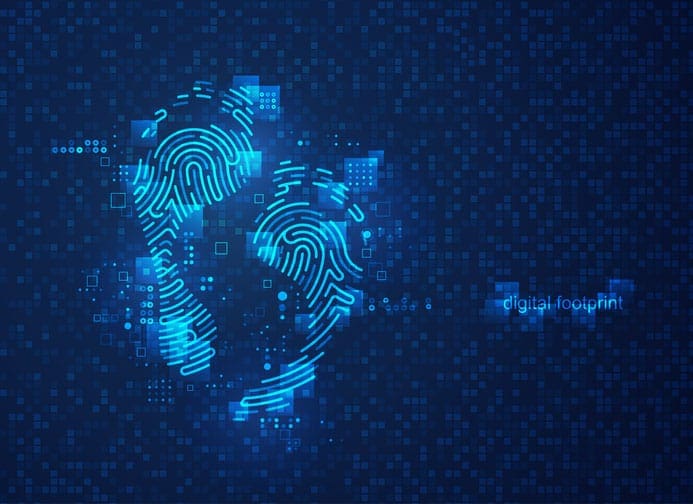The Digital Executive: How to Protect Your Personal and Professional Digital Footprint
Executives today operate in an increasingly connected world, where their digital presence is often as visible as their professional reputation. From corporate bios and media interviews to personal social media activity, an executive’s digital footprint is extensive –and, if left unprotected, a cyber and physical security risk.
Recent high-profile incidents, including the tragic killing of UnitedHealth executive Brian Thompson and the Sony Pictures cyberattack, have underscored the real-world consequences of digital exposure. Cybercriminals, bad actors, and even disgruntled employees can exploit personal and professional information to launch phishing attacks, impersonation scams, and even physical threats.
To stay ahead of these risks, executives need proactive strategies to minimize their online exposure, strengthen their digital security, and protect both their personal safety and corporate reputation.
What is an Executive’s Digital Footprint?
An executive’s digital footprint includes all personal and professional information that can be found online, including:
- Personal data such as home addresses, family members & details, financial records, and phone numbers found through data brokers or public records.
- Corporate presence, including biographies on company websites, conference speaker listings, media appearances, and LinkedIn profiles.
- Leaked or stolen personal information or credentials from personal and corporate email accounts that have been exposed in past data breaches.
- Social media activity that reveals locations, travel patterns, and professional associations.
This information is an invaluable asset to any criminal, not only cybercriminals, who can use it for targeted attacks, impersonation, and even real-world threats.
Why an Unprotected Digital Footprint is a Security Risk
- Cyber Threats: Phishing and Credential Exploits
Executives are prime targets for impersonation, phishing scams and credential attacks. If an attacker gains access to an executive’s email, they can impersonate them to authorize fraudulent transactions, leak sensitive corporate data, or gain deeper access to company systems.
Real-World Example: The New York Times Cyberattack
In 2013, hackers infiltrated The New York Times after the newspaper published an article about China’s Prime Minister. The attackers gained access to reporters' emails and confidential internal documents, demonstrating how high-profile individuals are often targeted by cyber espionage.
- Physical Security Risks: Stalking and Doxxing
A digital footprint isn’t just a cyber risk—it can become a physical security threat. If an executive’s home address, travel schedule, or personal details are exposed online, they and their families become vulnerable to harassment, stalking, or worse.
Real-World Example: The Murder of UnitedHealth Executive Brian Thompson
Brian Thompson, an executive at UnitedHealth Group, was tragically shot in what law enforcement described as a targeted attack. While the full details remain under investigation, the incident has heightened concerns around executive security, particularly for those whose personal details are publicly accessible.
- Reputation and Brand Damage
Executives are the public face of their organizations. If they become the target of a cyberattack, the fallout can extend far beyond personal risk – it can impact corporate reputation, stock prices, and public trust.
Real-World Example: The Sony Pictures Cyberattack
In 2014, hackers breached Sony Pictures Entertainment, leaking confidential executive emails, employee records, and unreleased films. The attack caused severe reputational damage, disrupted operations, and led to millions in financial losses.
Executives should view digital footprint protection as part of corporate risk management, not just personal cybersecurity.
How Executives Can Protect Their Digital Footprint
Reduce Publicly Available Information
- Remove all personal information found on both public and dark web sources
- Continually monitor and adjust social media privacy settings to minimize or remove any exposures.
- Eliminate posting travel plans, family photos, or location updates online.
Monitor for Digital Threats in Real Time
- Use threat intelligence tools to track online chatter about executives.
- Monitor dark web forums for leaked credentials and impersonation attempts.
- Set up real-time alerts for mentions of executive names in hacker communities.
Strengthen Password and Authentication Security
- Use unique, complex passwords for all accounts.
- Enable multi-factor authentication (MFA) on email, financial, and business accounts.
- Conduct regular security audits to check for leaked credentials.
Train Executives on Digital Security Risks
- Provide social engineering awareness training to help executives spot phishing attempts.
- Educate leadership teams on deepfake threats and impersonation scams.
- Develop incident response protocols for personal cybersecurity breaches.
Align Digital and Physical Security Measures
- Work with corporate security teams to integrate cyber threat intelligence with physical protection plans.
- Implement travel security protocols for executives visiting high-risk locations.
- Use secure communication channels instead of personal messaging apps or unencrypted emails.
Path Forward: Solutions for Strengthening Executive Digital Protection
While proactive steps like removing personal data, improving password security, and limiting social media exposure can reduce risk, a truly effective executive protection strategy requires real-time digital threat monitoring.
Constella’s Hunter+ is a digital risk protection platform that provides unmatched visibility into executives’ external digital footprints, detecting threats before they escalate.
Key Features of Hunter+:
- Continuous Monitoring across the surface, deep, and dark web for executive credentials, exposed identities, and impersonations.
- Proactive Alerts for risks like network breaches, account takeovers, and leaked executive data.
- Comprehensive Awareness through an all-in-one risk dashboard covering social media, dark web forums, and exposed personal data.
- Operationalized Protection that integrates with existing SOC and response workflows, accelerating mitigation efforts.
By continuously monitoring for external digital threats, Hunter+ empowers organizations to:
- Mitigate risks before they become attacks.
- Enhance security teams’ efficiency through automated monitoring.
- Protect executives and their families from cyber and physical threats.
A Secure Executive is a Resilient Executive
The modern executive is a high-value target for cybercriminals, activists, and corporate adversaries. Protecting an executive’s digital footprint is not just a personal concern – it’s a business imperative.
By taking proactive steps to minimize digital exposure, monitor threats in real-time, and integrate digital security with physical protection, companies can reduce risks, protect corporate leaders, and safeguard their business reputation.
Want to assess your executive team’s digital exposure? Download our free executive risk checklist today and learn how Constella Hunter+ can help strengthen your security posture.











